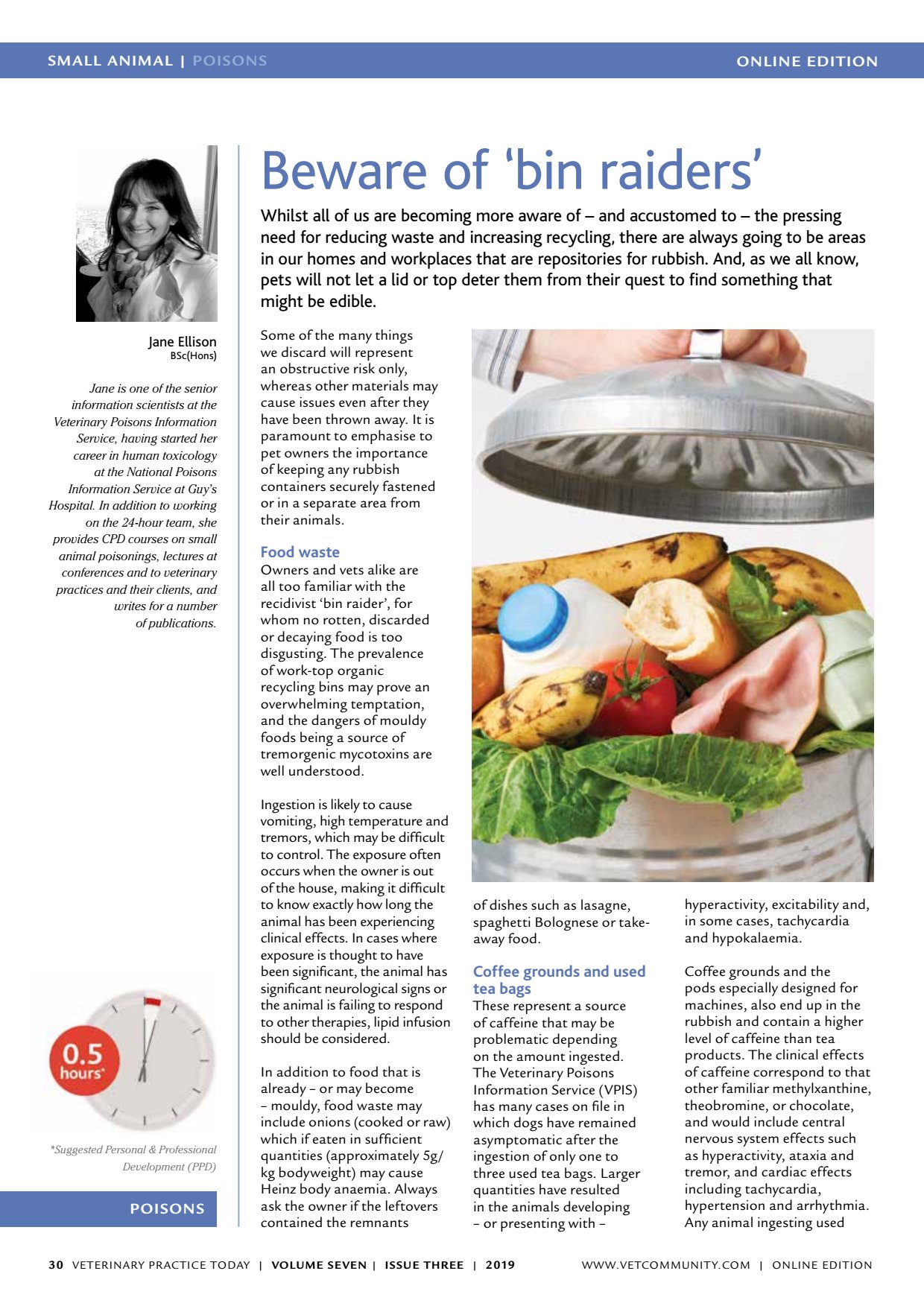Beware raiders Food
ONLINE EDITIONSMALL ANIMAL | POISONS VETERINARY PRACTICE TODAY | VOLUME SEVEN | ISSUE THREE | 2019 30 POISONS Suggested Personal & Professional Development (PPD) Jane Ellison BSc(Hons) Jane is one of the senior information scientists at the Veterinary Poisons Information Service, having started her career in human toxicology at the National Poisons Information Service at Guys Hospital. In addition to working on the 24-hour team, she provides CPD courses on small animal poisonings, lectures at conferences and to veterinary practices and their clients, and writes for a number of publications. Beware of bin raiders Whilst all of us are becoming more aware of and accustomed to the pressing need for reducing waste and increasing recycling, there are always going to be areas in our homes and workplaces that are repositories for rubbish. And, as we all know, pets will not let a lid or top deter them from their quest to find something that might be edible. Some of the many things we discard will represent an obstructive risk only, whereas other materials may cause issues even after they have been thrown away. It is paramount to emphasise to pet owners the importance of keeping any rubbish containers securely fastened or in a separate area from their animals. Food waste Owners and vets alike are all too familiar with the recidivist bin raider, for whom no rotten, discarded or decaying food is too disgusting. The prevalence of work-top organic recycling bins may prove an overwhelming temptation, and the dangers of mouldy foods being a source of tremorgenic mycotoxins are well understood. Ingestion is likely to cause vomiting, high temperature and tremors, which may be difficult to control. The exposure often occurs when the owner is out of the house, making it difficult to know exactly how long the animal has been experiencing clinical effects. In cases where exposure is thought to have been significant, the animal has significant neurological signs or the animal is failing to respond to other therapies, lipid infusion should be considered. In addition to food that is already or may become mouldy, food waste may include onions (cooked or raw) which if eaten in sufficient quantities (approximately 5g/ kg bodyweight) may cause Heinz body anaemia. Always ask the owner if the leftovers contained the remnants of dishes such as lasagne, spaghetti Bolognese or take- away food. Coffee grounds and used tea bags These represent a source of caffeine that may be problematic depending on the amount ingested. The Veterinary Poisons Information Service (VPIS) has many cases on file in which dogs have remained asymptomatic after the ingestion of only one to three used tea bags. Larger quantities have resulted in the animals developing or presenting with hyperactivity, excitability and, in some cases, tachycardia and hypokalaemia. Coffee grounds and the pods especially designed for machines, also end up in the rubbish and contain a higher level of caffeine than tea products. The clinical effects of caffeine correspond to that other familiar methylxanthine, theobromine, or chocolate, and would include central nervous system effects such as hyperactivity, ataxia and tremor, and cardiac effects including tachycardia, hypertension and arrhythmia. Any animal ingesting used WWW.VETCOMMUNIT Y.COM | ONLINE EDITION
